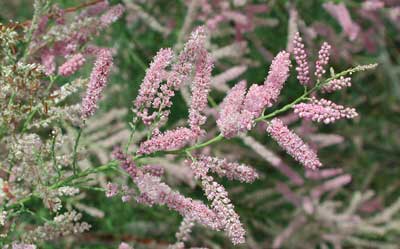Introduction
The principal reason that Reach 11 exists is for flood control. Water flowing down from Cave Creek and some smaller drainages is captured behind an earthen dam that parallels the north side of the Central Arizona Project Canal for some 11 km (7 miles). This dam keeps flood waters out of the canal and out of housing developments to the south. A kilometer-wide strip of floodable desert running the length of this dam is called Reach 11 - a Phoenix Parks and Recreation Area. Numerous hiking, biking and equestrian trails crisscross this area.
Silt and sand carried down by the force of flood waters has already accumulated behind the dam and in some spots there is a significant accumulation of ground water that supports mesquite bosques and even a few cottonwood trees. Blue Palo Verde, Desert Hackberry, Gray Thorn, Ironwood and Salt Bush species have grown very well in this habitat often produce abundant crops of seed. Birds and mammals are likewise abundant making this area attractive to both wildlife and wildlife watchers. Wintering sparrows can be quite abundant and there are many coyotes. After heavy rain there are ponds that can take weeks or months to dry up.
Eventually this area will become less favorable for more and more plants as the evaporating water leaves salts ... salt tolerant plants will predominate. Already there are crusts of white salt in the lowest lying areas.
Sponsored Links

Trails are level and easy to follow through stands of mesquite and blue palo verde.

Adapted from Phoenix Parks & Rec. Map.






 :
usually no or very few blooms open
:
usually no or very few blooms open :
a few scattered blooms likely to be seen
:
a few scattered blooms likely to be seen :
quite a few blooms likely to be seen, depending on past rainfall
:
quite a few blooms likely to be seen, depending on past rainfall :
abundant blooms dependent on favorable rainfall
:
abundant blooms dependent on favorable rainfall





